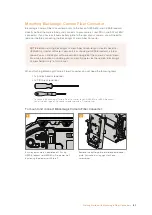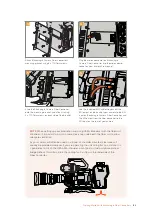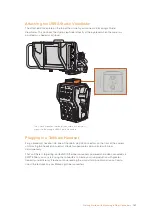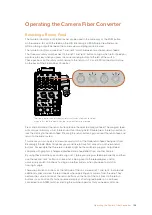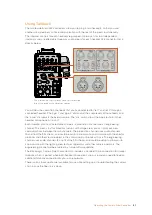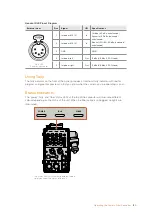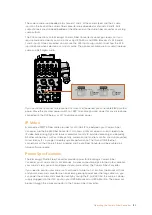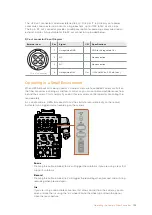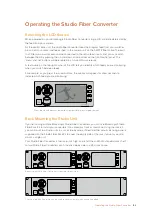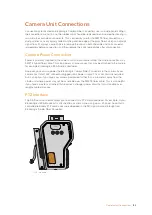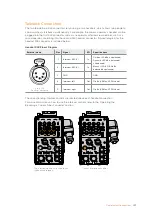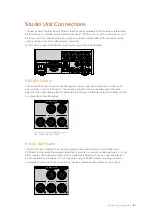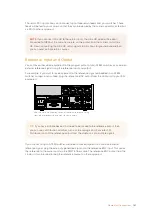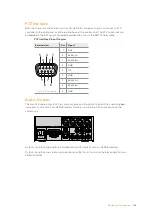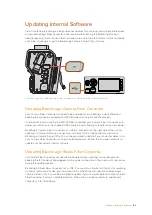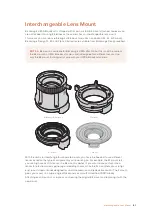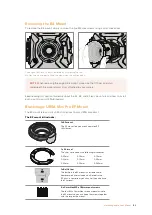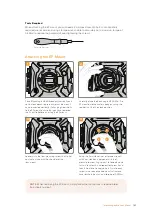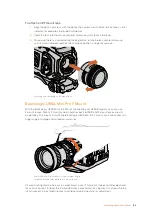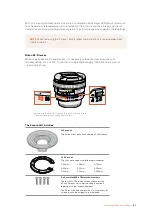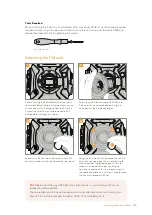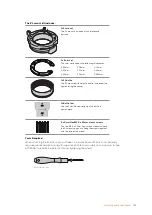
D-Tap Output
The +12V output on the left side panel is often referred to as a ‘D-tap’ or ‘P-tap’ and lets you
power accessories like a monitor or a large box lens. The output supports box lenses that
require up to +11.9 to 14 Volts direct current at 2 amps.
Reference Output and Operation
The reference output can be used to connect a reference signal to your camera via a
BNC cable.
To connect a reference signal to your camera:
1
Connect the reference output from the Blackmagic Camera Fiber Converter, marked
‘REF OUT’, to the reference input on your camera marked ‘REF IN’ using a small
BNC cable. (Add a tech writer note here to ‘Check if a small SDI cable is supplied for
reference’)
2
Set your camera’s reference setting to the reference input.
Any HD tri-level or black burst sync signal plugged into the Studio Fiber Converter will feed
through to the camera unit via the SMPTE fiber cable. A sync reference signal lets you genlock
video equipment to a common reference so all equipment share the exact same timing. This
means all video sources are synced and will switch smoothly.
ATEM switchers have built in re-synchronizers so if you are using all Blackmagic Design
equipment, then you don’t need to worry about connecting a sync reference. The reference
signal is embedded in the SDI program return feed from the ATEM switcher, so all you need to
do is make sure the program input is selected in your URSA Broadcast or URSA Mini’s reference
setting in the settings menu.
If you are using Blackmagic Design equipment, such as URSA Broadcast and an ATEM switcher,
with other SDI equipment and want to maintain sync between them, you can connect the ATEM
switcher’s reference signal via the Camera Fiber Converter’s reference output.
If you're using an external referance singnal, connect the referance output
tfrom the camera fiber unit to your URSA Broadcast reference input.'
USB
SDI IN
SDI OUT
REF OUT
ETHERNET
SDI OUT
SDI OUT
SDI IN
12V
LENS
REF IN
TC IN
12V OUT
PUSH
159
Camera Unit Connections

